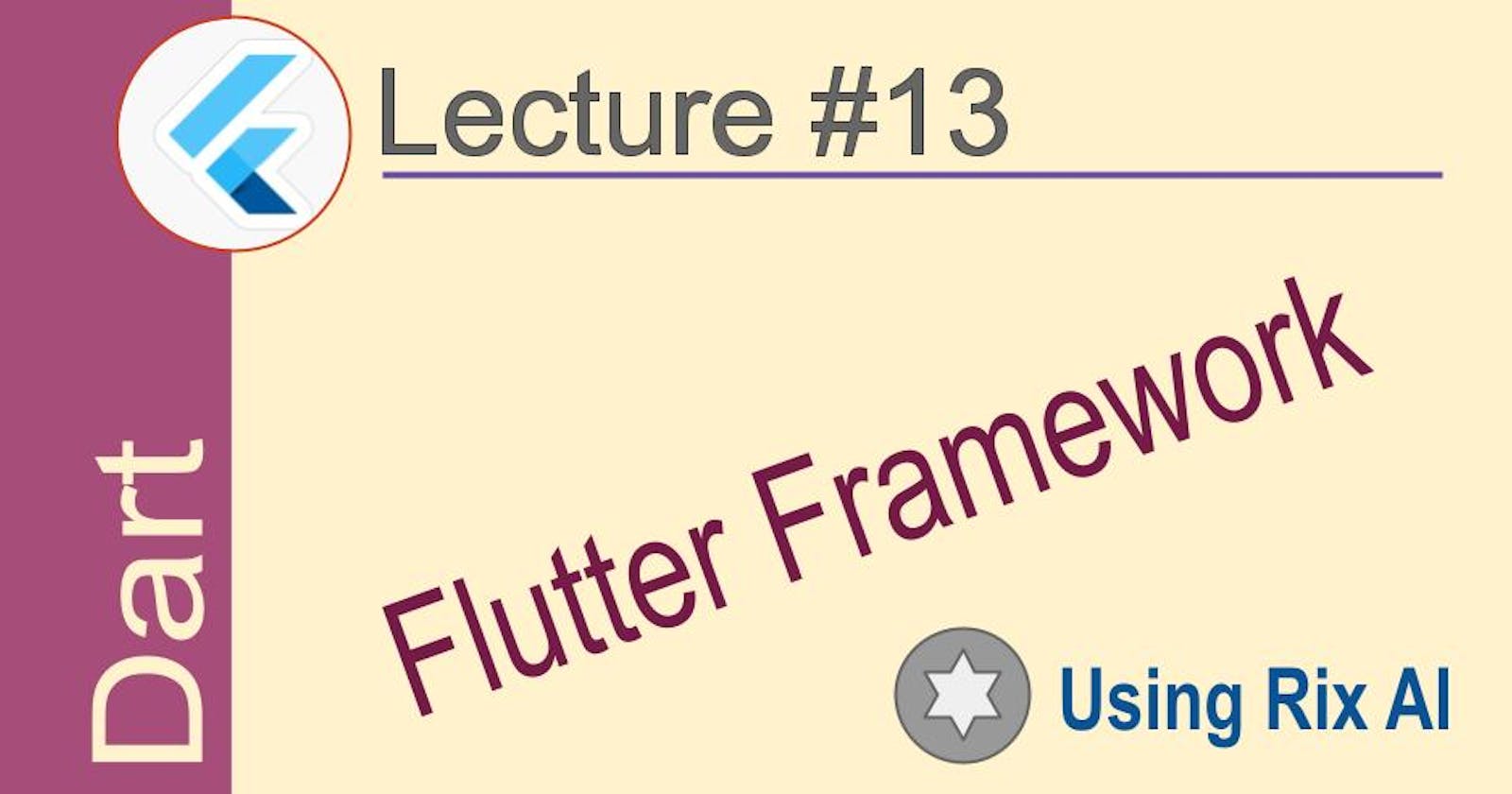Table of contents
Flutter is an open-source UI software development kit created by Google. It is used to develop applications for Android, iOS, Web, Windows and macOS from a single codebase.
Advantages of Flutter:
Cross-platform: Flutter apps can run on iOS, Android, Web, macOS and Windows from a single codebase. This reduces development time and cost.
Hot reload: Flutter provides a hot reload feature that instantly reloads your code changes to the app without rebuilding the app. This speeds up the development process.
Performance: Flutter uses its own rendering engine which compiles the Dart code to native code. This results in fast performance.
Beautiful UI: Flutter provides material design and Cupertino widgets which help create beautiful and consistent UI across platforms.
Open source: Flutter is an open-source project. Developers can contribute and improve the framework.
Use cases of Flutter: Flutter can be used to build:
Mobile apps (both Android and iOS)
Web apps
Desktop apps
Games
IoT apps
AR/VR apps
In short, Flutter is a powerful SDK for building high-performance, native-like apps for multiple platforms from a single codebase.
Learning Flutter
To learn Flutter, you will need:
Dart programming language: Flutter uses Dart as its programming language. So you need to learn the basics of Dart like variables, functions, classes, etc.
Flutter framework: You need to learn about the Flutter framework itself like widgets, state management, routing, themes, etc.
IDE: You can use Android Studio or VS Code as your IDE for Flutter development. Both come with plugins that make Flutter development easier.
Flutter widgets: You need to learn the various widgets available in Flutter like Text, Image, Button, ListView, etc. and how to use them.
State management: You should learn about state management options in Flutter like SetState, Provider, BLoC, etc. to manage the state of your widgets.
Debugging: You need to learn how to debug Flutter apps using the developer tools in your IDE.
Documentation: Going through the Flutter documentation and various tutorials will help you learn the framework quickly.
Practice: Build some sample Flutter apps to practice what you learn and solidify your knowledge. Start with simple apps and gradually build more complex ones.
So in summary, to learn Flutter you need to learn the Dart language, the Flutter framework, use an IDE like Android Studio or VS Code, and learn about the various widgets, state management options, debugging and documentation. And finally put everything into practice by building some apps.
Success Stories
Here are some success stories of Flutter projects and companies using Flutter successfully:
• Alibaba - Alibaba's e-commerce platforms like Taobao and AliExpress use Flutter internally for some of their apps.
• Google - Google uses Flutter to build internal tools and apps like the AdWords mobile app.
• Hamilton Musical - The official Hamilton Musical app was built using Flutter. It has over 10 million downloads.
• Reflectly - Reflectly is a meditation app built entirely with Flutter. It has over 1 million downloads.
• Hook - Hook is a social media app built with Flutter. It has over 5 million downloads.
• Coach - Coach is a workout and fitness app built with Flutter. It has over 1 million downloads.
• JD Finance - JD Finance, the financial services arm of JD.com, uses Flutter for some of their products.
• Boox - Boox, an e-reader company, uses Flutter for their apps and firmware.
• Uber - Uber uses Flutter for some internal tools and productivity apps.
• Shopify - Shopify uses Flutter for some internal tools and features.
So as you can see, many big companies and successful apps and projects are using Flutter to build high-quality, performant apps. Flutter's cross-platform capabilities and performance are proving to be a big draw for both large enterprises and starttups alike.
Resources
Here are some good Flutter resources to learn from:
- The Flutter documentation - This is the official documentation and a great place to start. It covers everything about the Flutter framework.
- Flutter tutorials by ResoCoder on YouTube - These tutorials are very beginner-friendly and cover all the basics of Flutter development.
URL: https://www.youtube.com/playlist?list=PLR2qQy0Zxs_UdqAcaipPR3CG1Ly57UlhV
- Flutter docs codelabs - These are step-by-step guides that walk you through building simple Flutter apps. A great way to learn by doing.
URL: https://codelabs.developers.google.com/?cat=Flutter
- Flutter examples on GitHub - Browsing sample Flutter apps on GitHub is a good way to get inspired and learn new things.
URL: https://github.com/topics/flutter-example
- Flutter on Coursera - This course by the University of California San Diego is a comprehensive introduction to Flutter and mobile app development.
URL: https://www.coursera.org/learn/flutter-build-mobile-apps
- Flutter documentation cookbook - This contains recipes for common tasks and patterns in Flutter development.
URL: https://flutter.dev/docs/cookbook
- flutter.dev - The official Flutter website is a great central hub for all things Flutter.
URL: https://flutter.dev/
Hope these resources help! Let me know if you have any other questions.
Disclaim: I have never used Flutter. I can't tell if is difficult to learn or if is a good framework but I will definitely try these resource to see if all links are correct.

